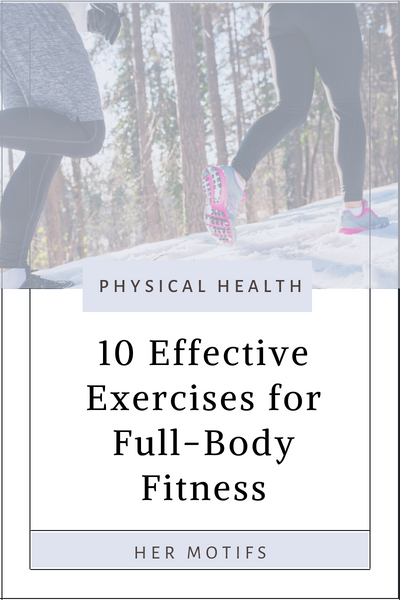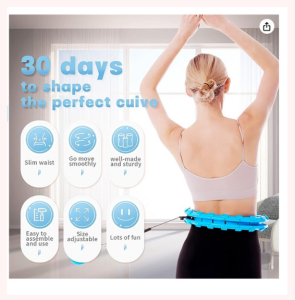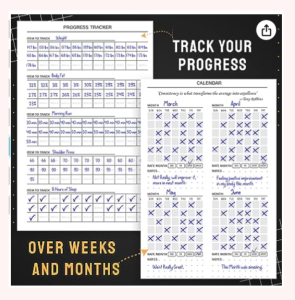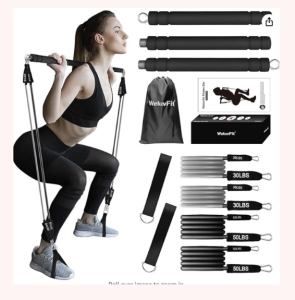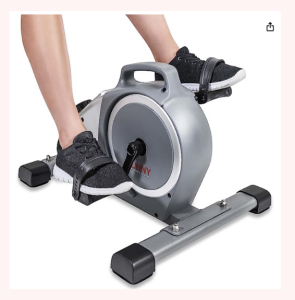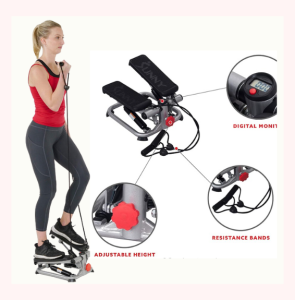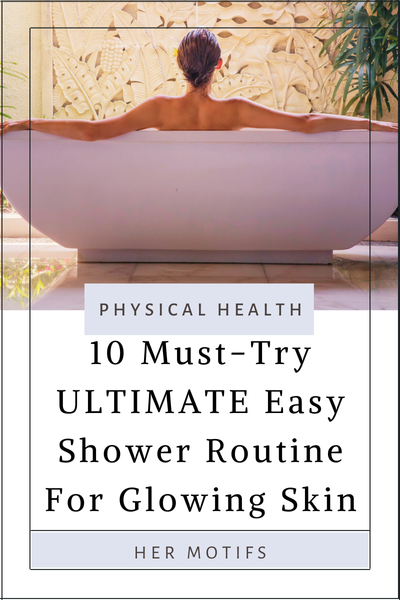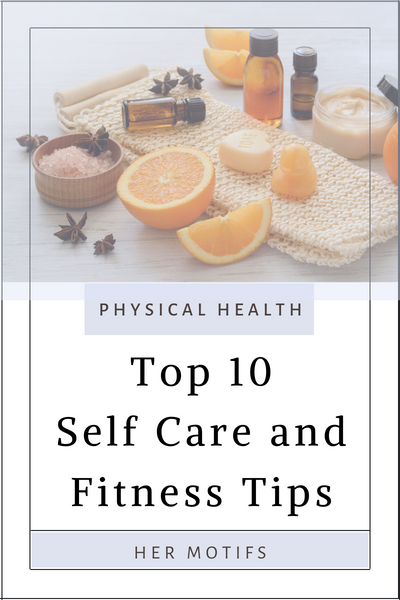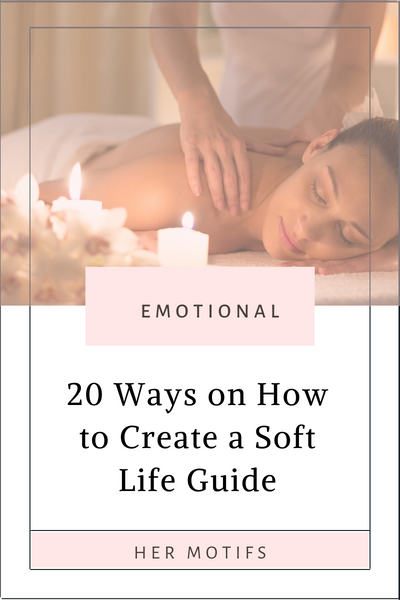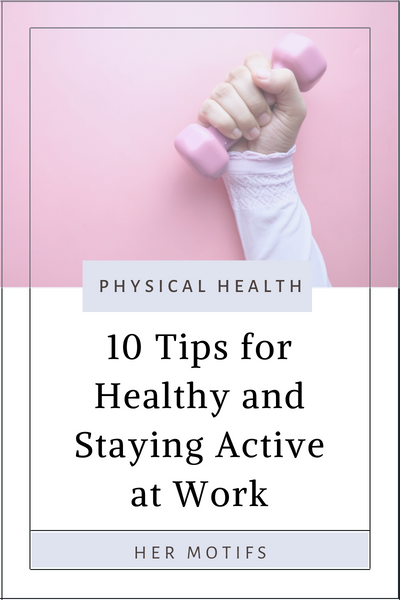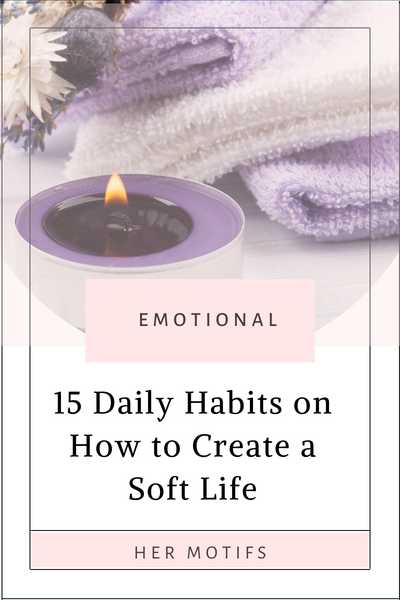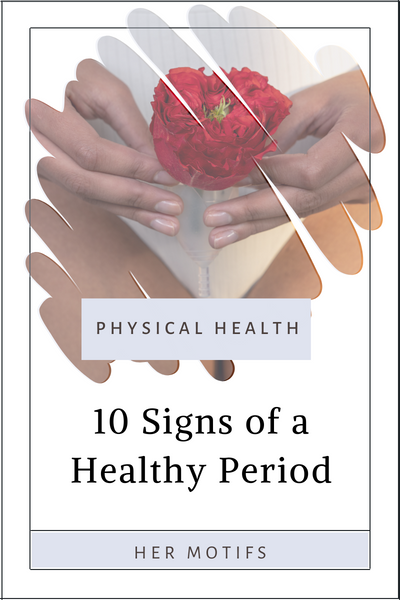10 Effective Exercises for Full-Body Fitness
 Full-body fitness refers to a state of physical well-being and conditioning that encompasses the strength, endurance, flexibility, and overall functionality of the entire body.
Full-body fitness refers to a state of physical well-being and conditioning that encompasses the strength, endurance, flexibility, and overall functionality of the entire body.
It involves developing and maintaining a balanced level of fitness across all major muscle groups and physiological systems.
In full-body fitness, the goal is to engage and strengthen various muscle groups throughout the body, rather than focusing solely on specific areas or isolated exercises. It aims to promote overall strength, cardiovascular fitness, muscular endurance, mobility, and coordination.
A comprehensive full-body fitness program typically includes exercises and activities that target different muscle groups, such as the upper body (chest, back, shoulders, arms), lower body (legs, glutes), and core (abdominals, lower back).
It also incorporates cardiovascular exercises for improving heart health and endurance, as well as flexibility exercises to maintain joint mobility and prevent injuries. By training the entire body, full-body fitness helps to promote overall functional fitness, enabling individuals to perform daily activities with ease, maintain a healthy body composition, enhance athletic performance, and reduce the risk of injuries
.
.
1. Squats
Squats are a compound exercise that engage multiple muscle groups, including the quadriceps, hamstrings, glutes, and core.
How To Squat: Stand with your feet shoulder-width apart, lower your body by bending your knees, and push your hips back as if you’re sitting in a chair. Keep your chest up and back straight, then return to the starting position. Here are the benefits of incorporating squats into your fitness routine:
- Strengthens Lower Body Muscles: Squats are a highly effective compound exercise that engages multiple muscle groups simultaneously. By performing squats regularly, you can develop stronger and more defined quadriceps, hamstrings, glutes, and calves.
- Enhances Core Strength and Stability: Squats are not just a lower body exercise; they also engage the core muscles, including the abdominals, obliques, and lower back. During a squat, your core muscles work to maintain proper posture and stability.
- Promotes Functional Movement and Daily Activities: Squats mimic the movement patterns involved in many daily activities, such as sitting down, standing up, and lifting objects from the ground. By incorporating squats into your fitness routine, you can improve your ability to perform these functional movements with greater ease and efficiency.
To maximize the benefits of squats and minimize the risk of injury, it’s essential to maintain proper form and technique. Start with bodyweight squats, gradually progress to using weights or resistance bands, and consider seeking guidance from a qualified fitness professional to ensure proper execution.
.
2. Push-Ups
Push-ups are a classic bodyweight exercise that primarily target the muscles of the chest, shoulders, triceps, and core.
How to do Push-Ups: Start in a high plank position with your hands slightly wider than shoulder-width apart. Lower your body by bending your elbows, keeping them close to your sides, and then push back up to the starting position.
They are performed by lowering your body to the ground and pushing it back up while keeping your hands shoulder-width apart. Below are some benefits of incorporating push-ups into your fitness routine:
- Upper Body Strength and Muscle Development: Push-ups are an excellent exercise for building strength and muscle in the upper body. They engage the chest muscles (pectoralis major and minor), shoulder muscles (deltoids), and triceps, providing a comprehensive workout for the pushing muscles of the upper body.
- Core Stability and Balance: Push-ups require a stable and engaged core throughout the movement. The abdominal muscles, including the rectus abdominis and obliques, work to stabilize the body and maintain proper alignment.
- Versatility and Convenience: One of the great advantages of push-ups is their versatility and convenience. Push-ups can be performed virtually anywhere, as they require minimal space and no equipment. Whether you’re at home, in a gym, or even outdoors, you can incorporate push-ups into your workout routine easily.
Incorporating push-ups into your fitness routine can provide a well-rounded upper body workout, improve core strength and stability, and enhance functional strength for everyday activities.
.
3. Lunges
Lunges target the quadriceps, hamstrings, glutes, and calves.
How to Lunge: Stand with your feet hip-width apart and take a step forward with one leg, lowering your body until both knees are bent at a 90-degree angle. Push through the heel of your front foot to return to the starting position, and repeat on the other leg.
Lunges are a highly effective lower body exercise that targets the quadriceps, hamstrings, glutes, and calves. They involve stepping forward or backward with one leg and lowering the body until both knees are bent at approximately 90-degree angles.
- Leg Strength and Muscle Development: Lunges are a compound exercise that engages multiple muscle groups in the lower body. They specifically target the quadriceps, hamstrings, glutes, and calves. By performing lunges regularly, you can build strength and develop lean muscle in these areas.
- Functional Movement and Hip Mobility: Lunges mimic common movement patterns involved in daily activities, such as walking and climbing stairs. By performing lunges, you can improve your ability to perform these functional movements with greater ease and efficiency.
- Core Activation and Posture Improvement: Lunges engage the core muscles, including the abdominals and lower back, to stabilize the body during the movement. The core muscles work to maintain proper posture and alignment throughout the exercise.
To maximize the benefits of lunges and minimize the risk of injury, it’s important to maintain proper form and technique. Start with bodyweight lunges, gradually progress to using weights or resistance, and consider seeking guidance from a fitness professional if needed. ..
4. Deadlifts
Deadlifts work the posterior chain, including the glutes, hamstrings, lower back, and core.
How to Deadlift: Stand with your feet shoulder-width apart, bend your knees and hinge forward at the hips to grip the barbell with an overhand grip. Keep your back straight, chest up, and lift the bar by extending your hips and knees. Deadlifts are a compound exercise that targets multiple muscle groups, including the posterior chain, which consists of the muscles in the back, glutes, hamstrings, and core.
- Full-Body Strength and Muscle Development: Deadlifts are one of the most effective exercises for building overall strength and muscle mass. They engage the major muscles of the body, including the erector spinae (lower back), glutes, hamstrings, quadriceps, and upper back muscles.
- Functional Movement and Improved Posture: Deadlifts mimic the movement pattern of picking up objects from the ground, making them highly functional for everyday activities.
- Hormonal Response and Calorie Burning: Deadlifts are a demanding exercise that activates multiple large muscle groups. This can lead to a significant hormonal response, including the release of testosterone and growth hormone, which are essential for muscle growth and recovery.
To perform deadlifts safely and effectively, it’s crucial to learn proper form and technique. Start with lighter weights and focus on mastering the correct movement pattern before gradually increasing the load.
.
5. Pull-Ups
Pull-ups are a challenging exercise that primarily targets the back, biceps, and shoulders.
How to do Pull-Ups: Grab a pull-up bar with your palms facing away from you, shoulder-width apart. Hang with your arms fully extended, then pull your body up until your chin is above the bar. Lower yourself back down with control.
Pull-ups are a challenging upper body exercise that primarily target the muscles of the back, biceps, and shoulders. They involve hanging from a horizontal bar and pulling your body upward until your chin passes the level of the bar. Benefits include the below:
- Upper Body Strength and Muscle Development: Pull-ups are one of the most effective exercises for developing upper body strength. They engage the muscles of the back, including the latissimus dorsi (lats), rhomboids, and trapezius, as well as the biceps and muscles of the shoulders.
- Posture Correction and Back Health: Pull-ups help improve posture by targeting the muscles responsible for pulling the shoulders back and down. As many people spend a significant amount of time sitting and engaging in activities that promote rounded shoulders and a forward head posture, pull-ups can help counteract these imbalances.
- Functional Upper Body Strength: Pull-ups are a functional exercise that mimics pulling movements commonly encountered in daily activities and sports. By incorporating pull-ups into your fitness routine, you can enhance your ability to perform functional movements like pulling yourself up over obstacles, climbing, or even just lifting and carrying objects.
To perform pull-ups effectively, it’s essential to work on gradually building your strength and mastering proper form. If you are new to pull-ups, you can start with assisted pull-up variations or use resistance bands for assistance.
.
6. Planks
The plank is a great exercise for strengthening the core and stabilizing muscles.
How to Plank: Start in a push-up position, resting on your forearms instead of your hands. Keep your body in a straight line from head to heels, engage your core, and hold the position for a set amount of time. To maximize the benefits of planks, it’s important to maintain proper form and technique. Start by holding a plank for a shorter duration, such as 20-30 seconds, and gradually increase the time as you develop strength and endurance
The plank is a popular and effective core exercise that involves holding a position similar to the top of a push-up. It engages multiple muscle groups, particularly the abdominal muscles, lower back muscles, and muscles of the shoulders and hips. Here are three benefits of incorporating the plank into your fitness routine:
- Core Strength and Stability: The plank is renowned for its ability to strengthen the core muscles, including the rectus abdominis, transverse abdominis, obliques, and lower back muscles. By maintaining a stable plank position, you engage and activate these muscles, which contributes to improved core strength and stability.
- Improved Posture and Spinal Alignment: Planks require you to maintain a neutral spine position, which helps improve posture and alignment. By holding the plank position, you strengthen the muscles responsible for maintaining proper posture, reducing the risk of slouching or developing postural imbalances.
- Enhanced Total-Body Endurance: Planks are not only a core exercise but also a total-body exercise that engages the muscles of the upper body, lower body, and stabilizing muscles. Holding the plank position challenges your muscles to work isometrically (without movement) for an extended period.
Remember to engage the core muscles, keep a straight line from head to heels, and avoid sagging or lifting the hips.
Incorporating planks into your fitness routine can lead to improved core strength, enhanced posture, increased total-body endurance, and better flexibility and joint health. Whether you’re a beginner or an advanced exerciser, planks can be modified to suit your fitness level and can be performed virtually anywhere, making them a versatile and accessible exercise for improving overall fitness.
.
7. Dumbbell Shoulder Press
This exercise targets the shoulders, triceps, and upper back.
How to Dumbbell Shoulder Press: Sit on a bench with dumbbells held at shoulder height, palms facing forward. Press the weights overhead until your arms are fully extended, and then lower them back down to the starting position. It involves pressing dumbbells from shoulder level to an overhead position while keeping the palms facing forward.
- Shoulder and Upper Body Strength: The dumbbell shoulder press is a highly effective exercise for developing strength and muscle in the shoulders, particularly the deltoid muscles.
- Improved Shoulder Stability and Function: The dumbbell shoulder press requires stability and control throughout the movement. As you press the dumbbells overhead, the muscles surrounding the shoulder joints, including the rotator cuff muscles, work to stabilize the shoulders.
- Core Engagement and Postural Benefits: The dumbbell shoulder press requires core engagement to maintain proper posture and stability during the exercise. The abdominal muscles, along with the muscles of the lower back and hips, work to stabilize the body and prevent excessive arching or swaying.
- Increased Muscle Activation and Calorie Burning: The dumbbell shoulder press is a compound exercise that recruits multiple muscle groups simultaneously. This leads to increased muscle activation and a greater metabolic demand, resulting in higher calorie burning during the exercise.
To perform the dumbbell shoulder press effectively, it’s important to use proper form and technique. Start with lighter weights and focus on maintaining a neutral spine, avoiding excessive leaning or arching. Gradually increase the weight as you develop strength and confidence.
.
8. Russian Twists
Russian twists engage the core and oblique muscles.
How to Russian Twist: Sit on the floor with your knees bent, lean back slightly, and lift your feet off the ground. Hold your hands together or use a weight if desired. Twist your torso to one side, then to the other, while keeping your core engaged.
Russian twists are an effective core exercise that targets the abdominal muscles, particularly the obliques. This exercise involves twisting the torso from side to side while seated on the floor or holding a weight or medicine ball. Here are three benefits of incorporating Russian twists into your fitness routine:
- Core Strength and Stability: Russian twists are renowned for their ability to strengthen the core muscles, including the rectus abdominis, transverse abdominis, and obliques. The twisting motion engages and activates these muscles, helping to develop overall core strength and stability.
- Improved Rotational Power and Athletic Performance: Russian twists primarily target the oblique muscles, which are responsible for rotational movements. By regularly performing Russian twists, you can develop stronger and more powerful rotational muscles, leading to improved rotational power and performance in sports that involve twisting or rotational movements, such as golf, tennis, baseball, and martial arts.
- Increased Caloric Expenditure and Fat Burning: Russian twists are a dynamic exercise that engages multiple muscle groups simultaneously. The twisting motion, coupled with the engagement of the core muscles, increases the metabolic demand and calorie burning during the exercise.
Incorporating Russian twists into your fitness routine can lead to improved core strength and stability, enhanced rotational power, increased spinal mobility and flexibility, and increased caloric expenditure.
.
9. Step-Ups
Step-ups target the quadriceps, glutes, and hamstrings.
How to Step-Ups: Find a sturdy platform or bench. Step up onto the platform with one foot, driving through the heel, then bring the other foot up to meet it. Step back down, leading with the same foot, and repeat on the other side.
Step-ups are a versatile lower body exercise that involves stepping up onto a platform or bench using one leg at a time. This exercise primarily targets the muscles of the lower body, including the quadriceps, hamstrings, glutes, and calves. Here are three benefits of incorporating step-ups into your fitness routine:
- Leg Strength and Muscle Development: Step-ups are an effective exercise for building leg strength and muscle mass. By stepping up onto a platform and pushing through the working leg, you engage the quadriceps, hamstrings, glutes, and calves.
- Balance and Stability Improvement: Step-ups require balance and stability as you lift your body weight onto a higher surface. This exercise challenges the muscles responsible for balance and stability, including the core muscles, hip muscles, and ankle stabilizers.
- Functional Movement and Agility Enhancement: Step-ups mimic functional movements such as climbing stairs or stepping up onto elevated surfaces. By performing step-ups, you can improve your ability to perform these movements efficiently and with greater ease.
- Joint Health and Injury Prevention: Step-ups contribute to better joint health and injury prevention by strengthening the muscles that support and stabilize the knees, hips, and ankles. By performing step-ups, you engage the muscles around these joints, promoting stability and reducing the risk of injuries such as sprains or strains.
Incorporating step-ups into your fitness routine can lead to improved leg strength and muscle development, enhanced balance and stability, better functional movement and agility, and improved joint health and injury prevention.
.
10. Burpees
Burpees are a full-body exercise that combines a squat, plank, and jump.
How To Do Burpees: Start in a standing position, squat down, place your hands on the floor, and kick your feet back into a plank position. Jump your feet back in, stand up, and jump explosively into the air with your arms raised. Repeat the sequence.
Burpees are a dynamic, full-body exercise that combines elements of strength training and cardiovascular conditioning. They involve transitioning from a standing position to a plank position, performing a push-up, and then jumping back up explosively. Here are three benefits of incorporating burpees into your fitness routine:
- Cardiovascular Endurance and Fat Burning: Burpees are a high-intensity exercise that elevates your heart rate quickly, making them an excellent cardio exercise. Performing burpees can improve cardiovascular endurance, increasing your lung capacity and overall stamina.
- Full-Body Strength and Muscle Engagement: Burpees engage multiple muscle groups, making them a great exercise for full-body strength development. They target the muscles of the upper body, including the chest, shoulders, triceps, and core muscles. Burpees also work the lower body muscles, such as the quadriceps, hamstrings, glutes, and calves.
- Time Efficiency and Versatility: Burpees are a time-efficient exercise that can be performed anywhere without the need for equipment. They can be incorporated into high-intensity interval training (HIIT) workouts or used as a standalone exercise.
Incorporating burpees into your fitness routine can lead to improved cardiovascular endurance, full-body strength development, enhanced functional movement, and time-efficient workouts. However, due to their intensity, it’s essential to listen to your body, start with proper form, and gradually increase the intensity and volume to prevent overexertion or injury.
.
Conclusion
These exercises contribute to overall strength development, muscle toning, improved cardiovascular endurance, enhanced core stability, and better functional movement. They engage multiple muscle groups simultaneously, making them efficient for maximizing results in a shorter amount of time.
Furthermore, these exercises can be adapted to suit various fitness levels and goals. Whether you are a beginner or an advanced exerciser, modifications and progressions can be applied to challenge yourself appropriately and prevent plateauing.
It is important to note that proper form, technique, and gradual progression are crucial to avoid injuries and ensure optimal benefits.
.
- 100 Valentine Lovers Questions - February 24, 2025
- 2025 New Year Growth Quotes - February 24, 2025
- 2025 Inspiring Self Love Quotes - February 24, 2025
